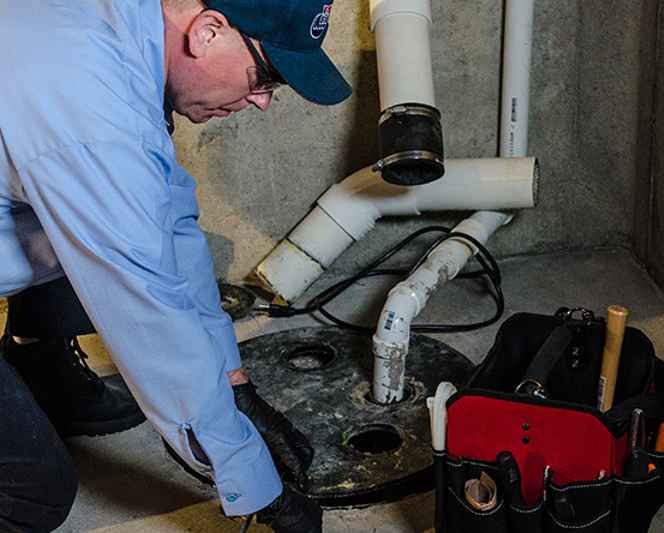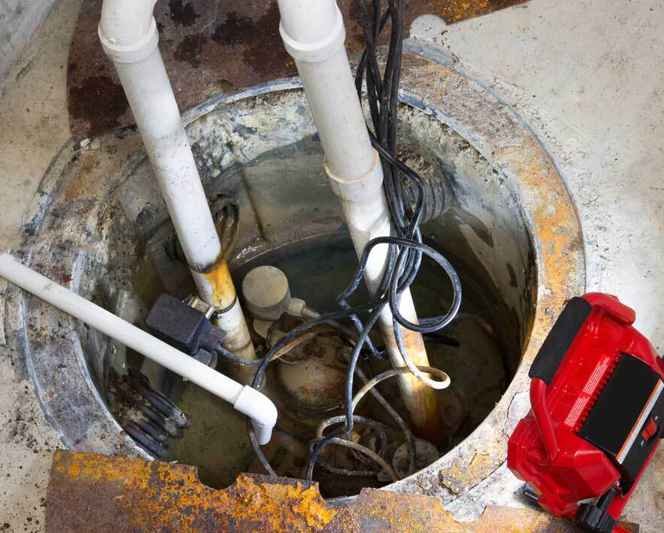Sump up the Jam: Sump Pump Maintenance Tips from Roto-Rooter
What do sump pumps, life insurance, and aerodynamics have in common?
They’re all subjects we’d rather not think about but cause panic when something goes wrong with them.
Well, we’re here to breakdown the conversational barriers around the sump pump issue (you’ll have to find different experts for the other two).
Come with us as we descend the basement stairs and take a long, hard look at these home maintenance heroes.
What are they, how do they work, and what can we do to make sure they live a long, dry, and happy life?


What is a sump pump, and how does it work?
The sump pump has come a long way since the early 18th century, when basement pits were kitted out with a bucket that had to be manually bailed out when groundwater rose.
So let’s take it back to basics and clear up exactly what this marvel of early domestic technology is. A sump is a pit—or a hole—and a pump is, well, a pump. So what happens is this: a hole or pit (technically called a “basin”) is dug beneath a home’s basement floor.
A mechanized pump equipped with water sensing valves is then fitted into the pit. When the water level in the pit gets too high, the pump automatically kicks into action, pumping the excess water to a different location away from the house. This is done through a pipe (aka an “effluent”) that has been pre-laid to a safe destination.
The best sump pumps for basements are basically always on; they might not be actively pumping water away, but they should be constantly measuring water levels and ready to take action when needed.leaks.
Best Types of Sump Pumps for Your Home
Although the concept is always the same, the makeup of sump pumps differs in construction, size, and cost. The two main types of domestic pumps include the following:
Pedestal: This may be what first comes to your mind when you think of sump pumps. They’re the traditional make-up of a tallish structure that stands higher than the pit they’re mounted in. Generally speaking, they’re easy to service, last a good number of years, and do the job they were intended to do; no mess, no fuss.
Submersible: As you would expect, these pumps are fixed deep within the base of the pit. Submersibles are a modern advancement on the sump pump technology and bring with them the advantages of working quietly and efficiently.
If you’re looking at installing or fitting a new pump and are not sure where or how to select the best model for your home, we found this article from U.S. News very informative.


A Deep Dive into Sump Pump Maintenance Tips
Our sump pumps really need the most minimal of care, but remember: a little goes a long way. Here are a few sump pump maintenance tips to keep your basement dry and your anxiety low:
Regular Testing: Every few months, test your pump by filling the pit with water and checking that the machine kicks into action. You should be able to see the water level actively decreasing. This step is particularly helpful during dryer months when any issues may not be immediately obvious.
Clean out the pit: Over time, debris can fall in and fill up the space. Making sure the pit is cleared out and empty will keep your sump pump unproblematic.
Check on it: Don’t underestimate the value of just checking your pump for any warning lights or strange noises. If you don’t journey down into your basement often, it may be worth setting a reminder in your calendar.
Roto-Rooter Sump Pumps It Up
It’s true, sump pumps really do make up a large volume of our work. We regularly do installations, repairs, and, in the case of a sump pump going wrong, water clean-up and restoration. Here at Roto-Rooter, we work hard to keep water in its place, which is not sloshing around your basement. If you need a professional touch on your sump pump, be sure to reach out to us. We’ll be there before you can sump pump up the water volume!
